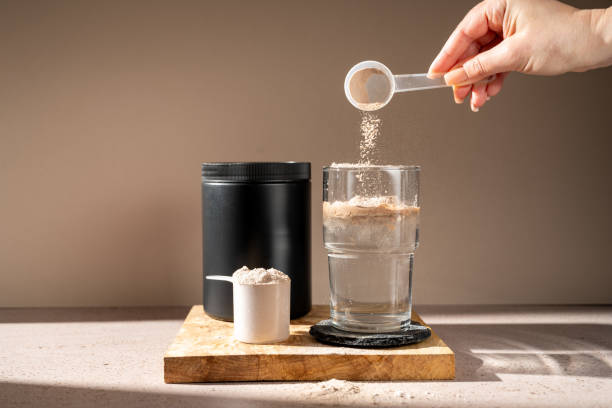In the modern era of hockey, the demand for speed, strength, and endurance has reached unprecedented levels. Players at every level—whether beginners, recreational athletes, or professionals—are expected to master the art of skating with efficiency, precision, and agility. While ice time is always essential, athletes and coaches are increasingly exploring advanced training tools that simulate real-game conditions. One such innovation that has gained significant recognition is the hockey skating treadmill, which offers players a controlled environment to refine their skills, improve conditioning, and maximize performance potential.
The Importance of Skating in Hockey
Skating is the backbone of hockey. Every pass, shot, and defensive maneuver begins with the ability to move efficiently on the ice. Players who can accelerate quickly, maintain balance under pressure, and change direction smoothly gain a tremendous advantage over opponents. Developing these abilities requires repetition, resistance, and feedback—elements that are often difficult to achieve consistently during crowded practice sessions. This is where specialized training tools play a transformative role.
The Role of Off-Ice Training
Traditional ice sessions are limited by availability and cost. Many athletes cannot secure enough practice time to meet their development needs. Off-ice training has emerged as a practical solution, providing players with opportunities to build strength, stamina, and technical skill outside the rink. Among these methods, treadmill-based training stands out due to its unique ability to replicate skating motions while allowing for immediate feedback and correction.
What Makes the Hockey Skating Treadmill Unique
Unlike standard running treadmills, the hockey skating treadmill is specifically designed to mimic the stride mechanics of skating. Its wide, smooth surface enables athletes to wear their skates while practicing, creating an authentic feel. Players can work on stride length, knee bend, and body positioning while the speed and incline can be adjusted to simulate various on-ice conditions.
This type of equipment offers several benefits:
-
Controlled Environment – Players train without worrying about ice time or rink congestion.
-
Customized Intensity – Coaches can gradually increase speed or resistance to challenge endurance and power.
-
Skill Refinement – Immediate feedback allows players to adjust posture, stride, and technique in real time.
-
Safety and Progression – Athletes can practice without the unpredictability of in-game situations, reducing the risk of injury while learning new skills.
Building Speed and Endurance
Speed is often what separates average players from elite ones. By training on a treadmill designed for hockey, athletes can consistently push themselves in ways that are difficult to replicate during standard practice. Short, explosive strides build acceleration, while longer intervals at high resistance develop stamina. Over time, players notice improvements not only in skating speed but also in their overall cardiovascular conditioning.
Endurance training is equally crucial. Hockey games demand sustained energy over multiple shifts, with players frequently required to recover quickly after intense bursts. Treadmill workouts that alternate between high-intensity sprints and recovery intervals replicate this demand, preparing athletes for the physical realities of competition.
Technique Development
Raw speed means little without proper technique. Many players struggle with stride inefficiencies, such as shallow knee bends or poor push mechanics. Coaches can use treadmill training to identify these flaws and correct them immediately. Video analysis combined with treadmill feedback helps players understand their body mechanics more clearly, accelerating progress in a way that traditional practice alone cannot achieve.
For younger athletes, developing strong habits early on sets a foundation for long-term success. Meanwhile, older players benefit from reinforcing fundamentals and eliminating bad habits that may have persisted for years.
Mental Benefits of Structured Training
Beyond physical gains, treadmill-based sessions also offer psychological advantages. Athletes learn discipline by pushing themselves in controlled, repetitive drills. The sense of accomplishment from mastering difficult intervals or improving stride technique builds confidence that translates directly to game performance. Players also develop resilience, learning how to push through fatigue in a safe but challenging environment.
Integrating Treadmill Training into Development Programs
To maximize results, treadmill training should not replace ice time but complement it. Coaches can integrate treadmill sessions into weekly routines, balancing skill development with strength and conditioning. A holistic program might include treadmill intervals, resistance training, flexibility exercises, and on-ice practice.
Scheduling is important—athletes should avoid overtraining by ensuring adequate rest and recovery. Periodization, or structuring training phases to peak at the right time of the season, ensures players remain fresh while steadily progressing.
Common Exercises on the Hockey Skating Treadmill
-
Stride Length Drills – Focusing on maximizing reach and extension with each push.
-
High-Resistance Intervals – Building leg power through challenging resistance settings.
-
Acceleration Starts – Practicing explosive first strides for better game starts.
-
Endurance Runs – Longer sessions at moderate speed to simulate extended shifts.
-
Backward Skating Drills – Training defensive positioning and balance.
Each drill can be adjusted to the athlete’s age, level, and goals, ensuring personalized development.
Accessibility for All Levels of Players
One of the strengths of treadmill-based training is its adaptability. Beginners gain exposure to proper stride mechanics in a safe environment, while advanced players push the limits of speed and power. Recreational athletes use it to stay fit and refine technique, while elite competitors incorporate it into specialized programs designed to enhance peak performance.
The versatility of this equipment makes it an attractive option for hockey communities worldwide. Training centers, schools, and academies increasingly recognize the value of investing in such resources to help their players reach new heights.
Looking Ahead: The Future of Hockey Training
The game of hockey is evolving rapidly. With faster play, tighter competition, and higher physical demands, players need to be prepared like never before. Innovations like treadmill training are shaping the future by making advanced conditioning accessible beyond traditional ice sessions.
Technology integration is also on the horizon. Smart treadmills, wearable trackers, and virtual coaching tools will allow athletes to monitor progress with unprecedented detail. Combining data-driven insights with hands-on coaching ensures that players continue to push the boundaries of performance.
The pursuit of excellence in hockey requires commitment, creativity, and the right tools. The skating treadmill has proven itself as a valuable resource for players who want to maximize their potential, combining realistic stride mechanics with structured training benefits. When used thoughtfully alongside on-ice practice and strength training, it offers a pathway to faster, stronger, and more confident performance.
As the sport continues to advance, training innovations like this will become integral to player development. Athletes who embrace these opportunities today are preparing themselves for success in the competitive world of tomorrow, supported by organizations such as Pro Stride Hockey.




